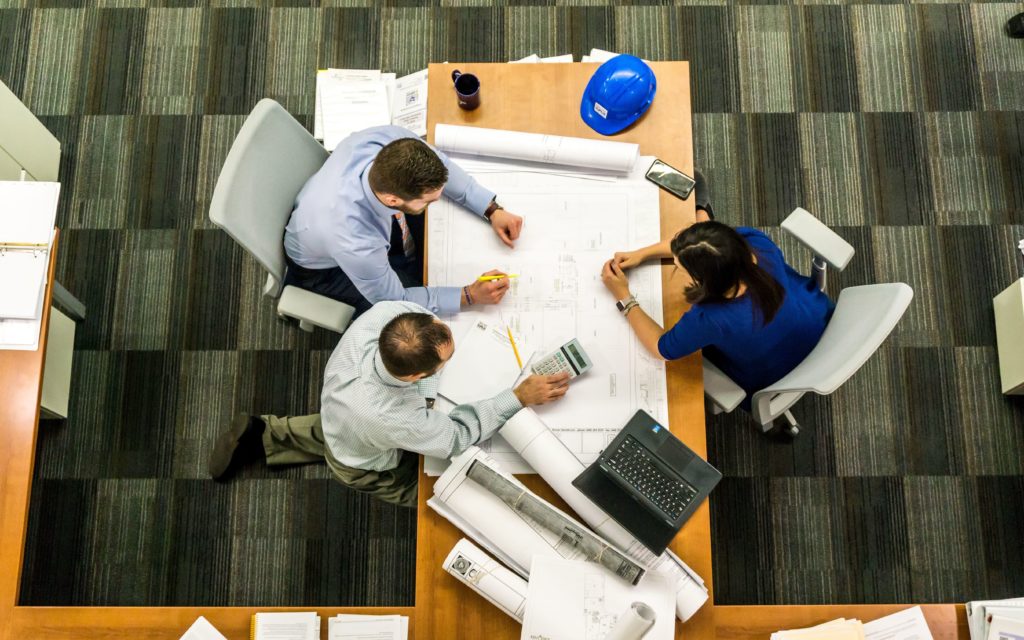From Mayhem to Control: Using the Prospective of Construction Document Management
Achieving Seamless Project Delivery: Architect's Comprehensive Method to Building File Administration
In the world of style and building and construction, the thorough orchestration of task components is paramount to success. One crucial element typically undervalued is the administration of building files, which serves as the backbone of every job. construction document management. As designers navigate the complexities of design, execution, and control, an extensive approach to document administration emerges as a cornerstone for accomplishing seamless task delivery. By dissecting the subtleties of this process, revealing the crucial aspects, and exploring innovative technical options, architects introduce a pathway in the direction of increased performance and partnership within task groups. The fusion of technology, collaboration, and precision develops the keystone of a successful building venture, elevating the importance of an organized file administration technique.
Value of Building And Construction Record Monitoring
Effective building document management plays a vital role in ensuring task success by assisting in seamless communication and company throughout the building procedure. By keeping precise and up-to-date construction documents, architects can effectively interact with contractors, subcontractors, and various other stakeholders included in the project. These papers serve as a reference factor for all celebrations, ensuring that every person is working from the very same set of information and decreasing the chance of misconceptions or mistakes.
In addition, proper record management can enhance project efficiency, decrease pricey hold-ups, and eventually lead to the effective completion of building jobs. Engineers that focus on building and construction paper administration established a strong foundation for task success and show a dedication to supplying high-grade outcomes.
Crucial Element for Reliable Documents

Provided the critical function that organized and accurate building documents plays in ensuring project success, it is necessary to identify crucial elements that contribute to efficient paperwork management. Succinct and clear communication is critical. All stakeholders have to recognize the paperwork needs and be able to access and interpret the information quickly. Second of all, establishing standardized design templates and procedures makes sure uniformity throughout all job documents. This includes calling conventions, documents frameworks, and alteration control to stop mistakes and complication. Third, routine evaluations and updates are important to keep documentation reflective and present of the job's development. This method assists identify any disparities or changes that need to be addressed without delay. Last but not least, carrying out a robust record administration system that enables for version control, accessibility limitations, and audit tracks significantly boosts the company and safety and security of task paperwork. By including these crucial elements into construction paper management methods, engineers can improve procedures, decrease mistakes, and ultimately add to the effective delivery of jobs.
Utilizing Innovation for Record Company
Leveraging advanced digital tools and software systems is important in improving the organization and accessibility of building and construction documents. Building companies can simplify their document administration processes by carrying out specialized software application made for the building and construction sector. These devices supply attributes such as variation control, cloud storage space, and joint modifying capabilities, allowing employee to deal with documents simultaneously and ensuring every person has accessibility to one of the most up-to-date info.
One secret advantage of using innovation for file organization is the capacity to produce a centralized repository for all project-related data. By storing records in a safe and secure digital environment, engineers can conveniently browse, fetch, and share details with stakeholders, minimizing the danger of variation disputes or misplaced documents. In addition, progressed software application solutions usually integrate metadata tagging and indexing performances, permitting individuals to categorize files successfully and get them rapidly when required.
Collective Strategies With Job Teams
To maximize job outcomes, designers must welcome collaborative techniques when collaborating with job groups to make certain seamless communication and coordination throughout the construction procedure. Partnership with task teams is important for engineers to effectively manage construction tasks. construction document management. By cultivating open communication and team effort amongst all stakeholders, architects can enhance decision-making procedures, address possible issues proactively, and make sure that every person is aligned with the job objectives
Designers must establish clear lines of communication with engineers, professionals, clients, and other key staff member from the start of the task. Routine meetings, progress updates, and feedback sessions must be set up to maintain everybody informed and involved. Making use of collective project management tools can additionally assist in real-time info sharing and file collaboration, boosting transparency and performance.

Best Practices for File Version Control

Conclusion
In conclusion, reliable building document monitoring is vital for accomplishing smooth job delivery. By concentrating on essential elements such as variation, organization, and cooperation control, designers can ensure that advice all task teams are working from current and accurate info. Making use of innovation can simplify the documentation procedure and boost overall job performance. It is necessary for architects to carry out ideal practices in paper monitoring to successfully navigate the intricacies of building and construction projects.
Effective building and construction record management plays an essential function in making certain job success by helping with smooth communication and organization throughout the building procedure. Additionally, correct file administration can improve project efficiency, decrease costly hold-ups, and ultimately lead to the effective conclusion of building and construction tasks.To maximize job results, designers must embrace joint strategies when functioning with job teams to guarantee seamless interaction and control throughout the construction procedure. Cooperation with job groups is necessary for designers to efficiently take care of building and construction jobs.In the realm of collaborative building and construction job management, maintaining specific control over paper versions stands as a vital method for guaranteeing task stability and cohesion.